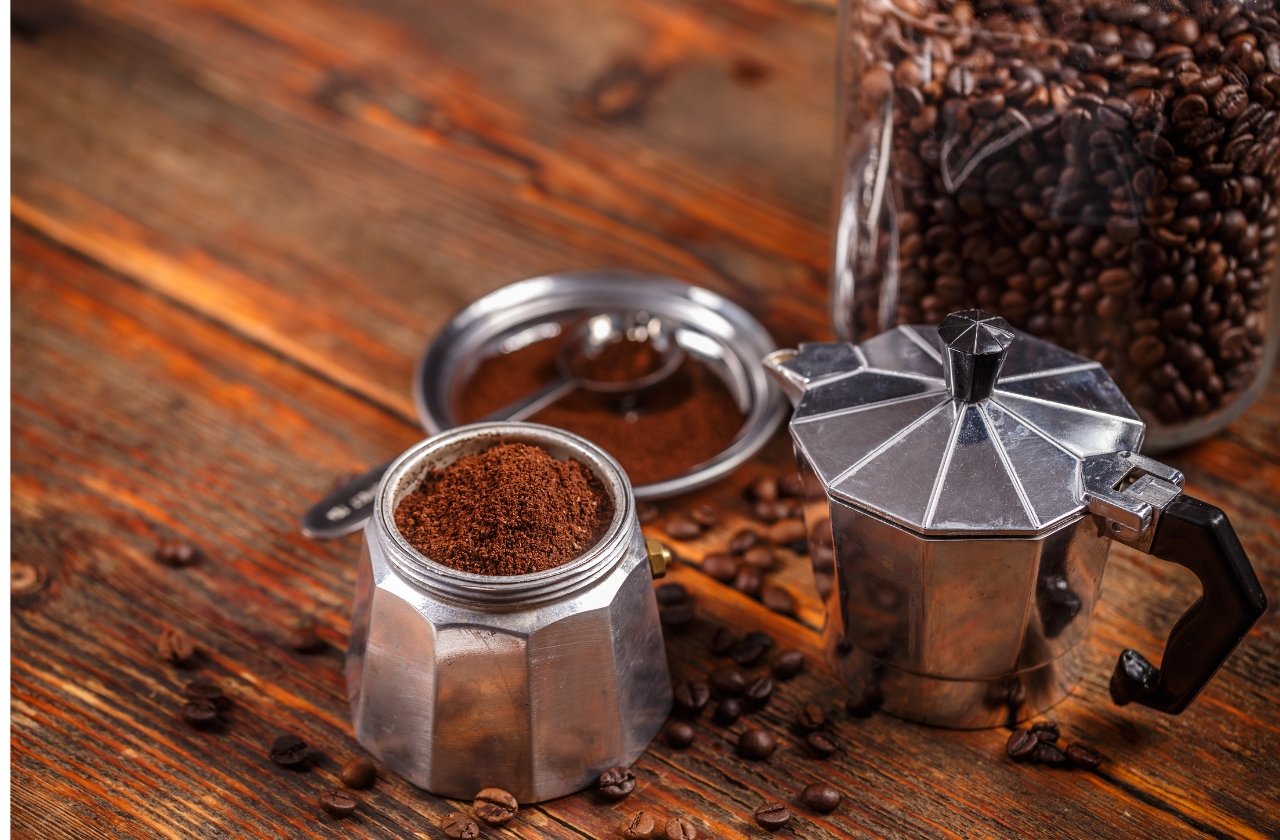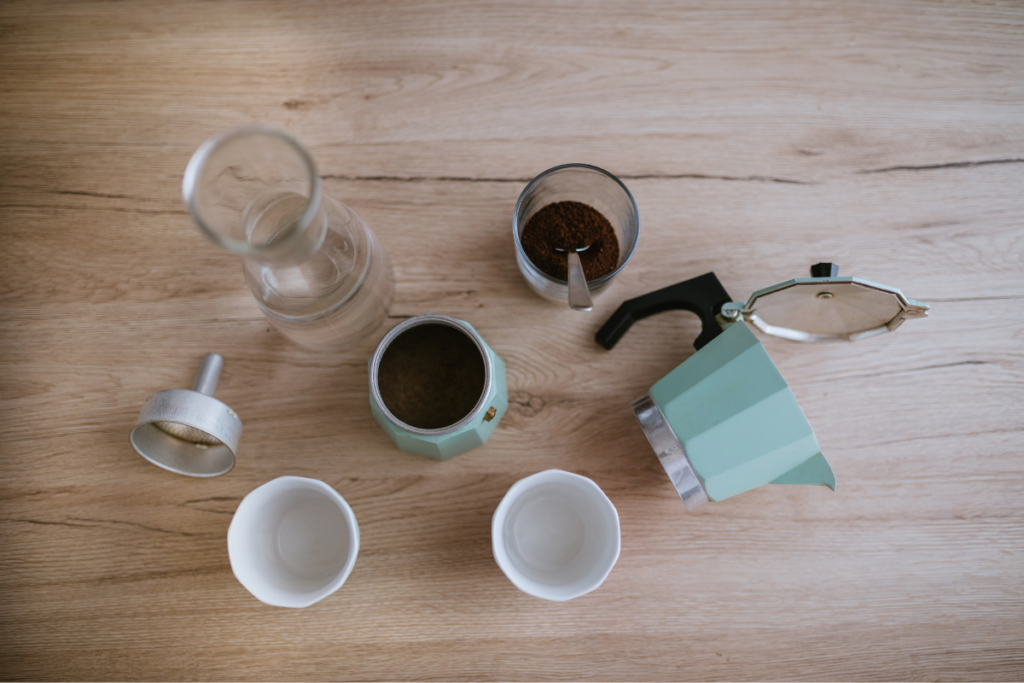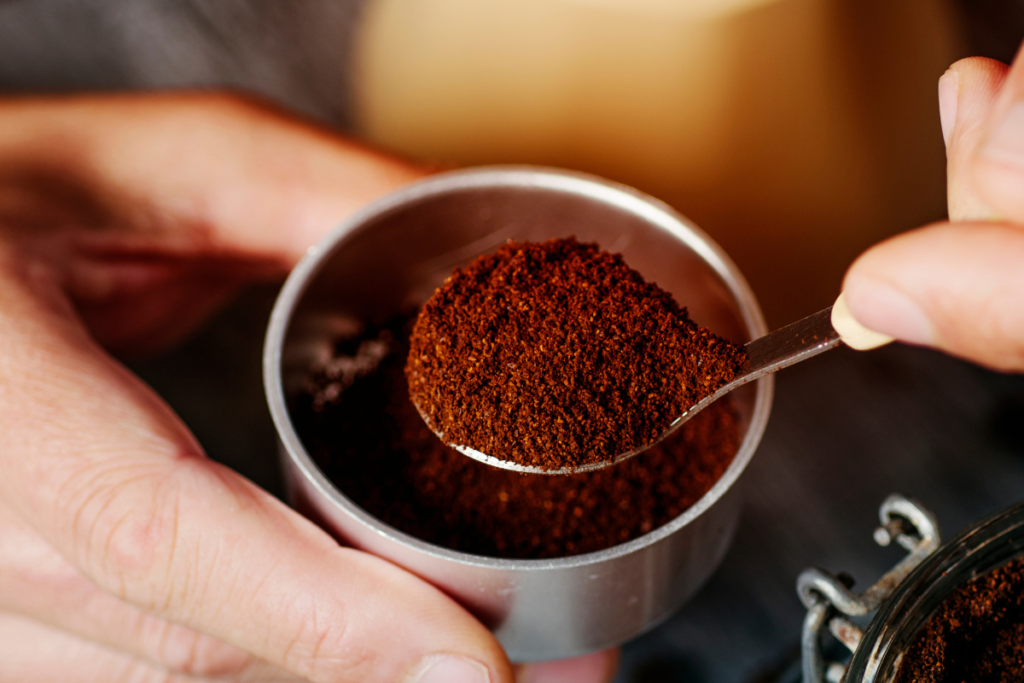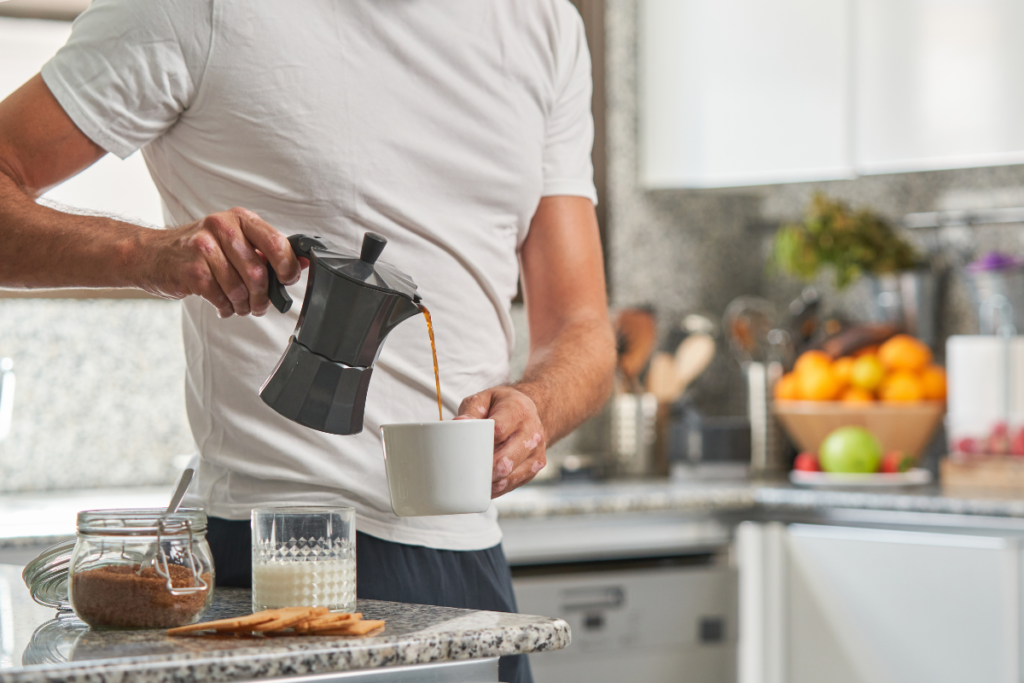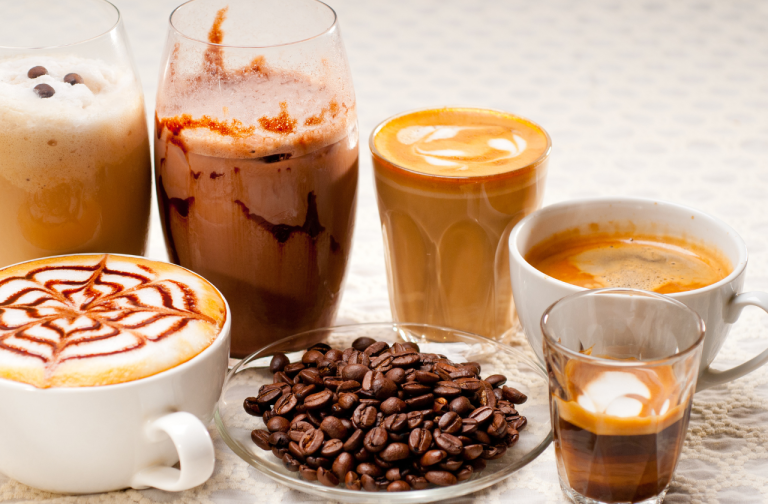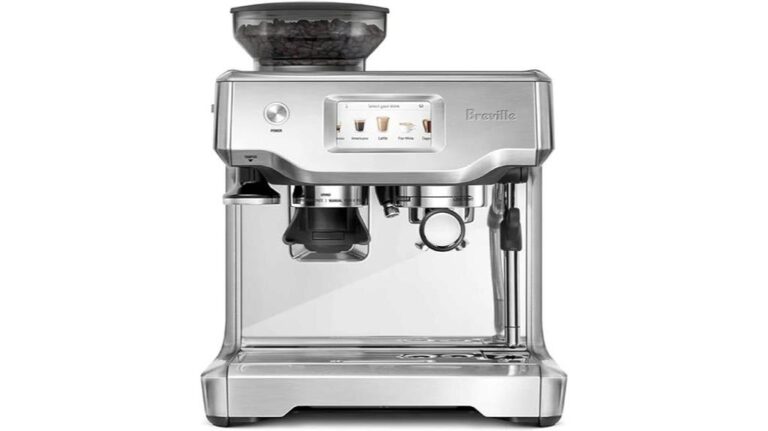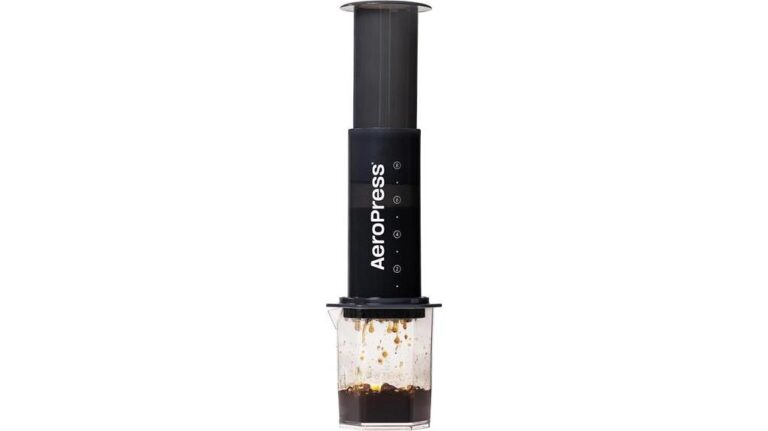What Is The Ideal Grind Size For A Moka Pot?
Moka Pot brewing is cherished by coffee aficionados globally for its ability to produce rich and robust espresso-like coffee. The Moka Pot, often referred to as a stovetop espresso maker, has carved its niche in the coffee culture, celebrated for its simplicity and the intense flavor it extracts from the coffee beans.
However, many coffee lovers wonder what exactly is the best coffee grind size for a Moka Pot? Is it as fine as the powdery granules used for espresso, or does it lean towards the coarser spectrum akin to that for a French press?
Whether you’re a seasoned Moka Pot user or a curious newcomer eager to master this brewing method, understanding the impact of grind size will elevate your coffee game. Let’s explore the intricacies of Moka Pot grind size to help you get the most from your brew.
Weird Coffee Tip: The coffee beans you use for brewing have a significant impact on the finished brew. If you want to understand the differences between the flavors of various coffee beans, take a look at this article:
Exploring Coffee Bean Flavor Profiles: A Comprehensive Guide
Understanding The Moka Pot
The Moka Pot, an iconic stovetop coffee maker, was invented and developed in 1933 by the Italian engineer Alfonso Bialetti. Its unique octagonal design is not just for aesthetics; it optimizes heat distribution for even brewing.
The Moka Pot consists of three main components: the lower chamber for water, the filter basket for coffee grounds, and the upper chamber where the brewed coffee collects.
How The Moka Pot Brews Coffee
The brewing process in a Moka Pot is a fascinating interplay of heat, pressure, and steam. Water in the lower chamber heats up and generates steam. This pressure forces the hot water up through the coffee grounds in the filter basket, extracting the coffee.
The brewed coffee then moves into the upper chamber, ready to be served. This method is known for producing strong, rich coffee, often compared to espresso.
The Role Of Grind Size In Moka Pot Brewing
Grind size is critical in Moka Pot brewing. The ideal grind is medium-fine, finer than what you’d use for drip coffee but not as fine as espresso powder.
This size ensures optimal extraction – too fine, and you risk over-extraction and a bitter taste; too coarse, and the coffee will be under-extracted, resulting in a weak brew. Achieving the right grind size is essential for the perfect balance of flavors.
The Ideal Grind Size For Moka Pot
For Moka Pot brewing, the perfect grind size falls between espresso and drip coffee grinds. This medium-fine grind is crucial for achieving the best results. It’s finer than the sandy texture of drip coffee grounds but not as powdery as espresso grinds.
This specific size ensures that the water can pass through the coffee at the right speed, extracting the full flavor without over-extracting.
Why This Grind Size Matters
The medium-fine grind is essential for two main reasons: extraction and flavor balance. In Moka Pot brewing, water passes through the grounds under pressure but not as intensely as in an espresso machine. If the grind is too coarse, water flows through too quickly, leading to under-extraction and a flat, weak coffee.
Conversely, if the grind is too fine, it can cause over-extraction, making the coffee taste bitter and overpowering. The medium-fine grind strikes a perfect balance, allowing for full extraction of flavors without the bitterness.
The Science Behind The Grind
Grind size directly influences how water interacts with coffee grounds during brewing. In Moka Pot brewing, water forced through the coffee grounds extracts flavors and compounds. A medium-fine grind creates enough resistance to slow down the water flow, allowing adequate time for extraction.
If the grind is too coarse, water passes through too quickly, leading to under-extraction and a weak flavor profile. Conversely, a very fine grind slows down the water excessively, causing over-extraction and resulting in a bitter taste.
Grind Size, Extraction Time, And Coffee Strength
The extraction time, which is partly governed by grind size, is crucial in determining the strength and quality of the coffee. A medium-fine grind ensures that the extraction time is neither too short nor too long, balancing the coffee’s strength.
This ideal extraction time allows for the extraction of desirable flavors while minimizing the extraction of bitter compounds, which typically occurs in the later stages of brewing.
Balancing Flavors With The Right Grind Size
The grind size affects the balance of flavors in the final brew. A medium-fine grind allows for a balanced extraction of both soluble and volatile compounds responsible for coffee’s flavor and aroma. This balance is key to achieving a rich and complex flavor profile in Moka Pot coffee.
The right grind size ensures that the coffee is neither too bitter nor too acidic, but rather a harmonious blend of flavors that Moka Pot enthusiasts cherish.
Problems With Incorrect Grind Sizes

Brewing with a Moka pot requires a specific grind size to achieve the best. Using a coffee grind size that is too fine for this brewer, or a grind size too coarse, can cause significant problems within the brewing process, and can be detrimental to the resultant brewed coffee.
Here are the problems with using the incorrect grind size for a Moka Pot:
Drawbacks of Too Fine a Grind
Using a grind that is too fine for Moka Pot brewing can lead to several issues. The most significant problem is over-extraction, where too many bitter compounds are drawn out, resulting in a harsh and unpleasant taste.
Additionally, a fine grind can impede the flow of water, increasing pressure in the Moka Pot. This not only affects the flavor but can also lead to clogging issues, making the brewing process more cumbersome and potentially damaging the equipment.
Consequences of Using a Coarse Grind
On the other end of the spectrum, a grind that is too coarse can be equally problematic. Coarse coffee grounds allow water to pass through too quickly, leading to under-extraction.
This results in a brew that lacks depth and richness, often described as weak or watery. The full spectrum of flavors that coffee has to offer is not adequately extracted, leaving much of the potential taste untapped.
Enhancing Your Moka Pot Experience
Tips For Improved Brewing
- Preheat Water: Start with preheated water in the lower chamber to reduce the Moka Pot’s exposure to heat, preserving its longevity and improving flavor.
- Avoid Tamping: Unlike espresso, tamping coffee in a Moka Pot can lead to over-extraction or uneven brewing. Simply level the grounds for consistent results.
- Control Heat: Use a low to medium heat setting. High heat can cause rapid brewing, affecting the coffee’s flavor and potentially damaging the Moka Pot.
Coffee Bean Recommendations
- Medium Roast Beans: These beans typically offer a balance of flavor, acidity, and body, which suits the Moka Pot’s brewing style.
- Single-Origin Beans: Consider single-origin beans for their unique flavor profiles, which can be more pronounced in Moka Pot brewing.
- Freshness Matters: Use freshly roasted beans and grind the coffee beans fresh just before brewing to ensure the freshest, most flavorful cup.
Maintenance Tips For Consistent Quality
- Regular Cleaning: After each use, disassemble and clean all parts of the Moka Pot with warm water. Avoid using soap as it can leave residues and affect taste.
- Check Seals and Valves: Regularly inspect the rubber seal and safety valve for wear and tear. Replace them as needed to maintain good working condition.
- Dry Storage: Store the Moka Pot in a dry place, disassembled. This prevents mold growth and maintains the integrity of the seal.
Conclusion
The ideal grind size for a Moka Pot is medium-fine, balancing between the coarseness of drip coffee and the fineness of espresso grinds. This specific grind size is crucial for optimal water flow and extraction rate, directly impacting the coffee’s strength and flavor balance.
The journey to the perfect Moka Pot brew is both an art and a science. We encourage you to experiment with the grind size and brewing techniques to find what works best for you. Each Moka Pot and coffee bean combination can yield different results, so don’t hesitate to explore and adjust your approach.
